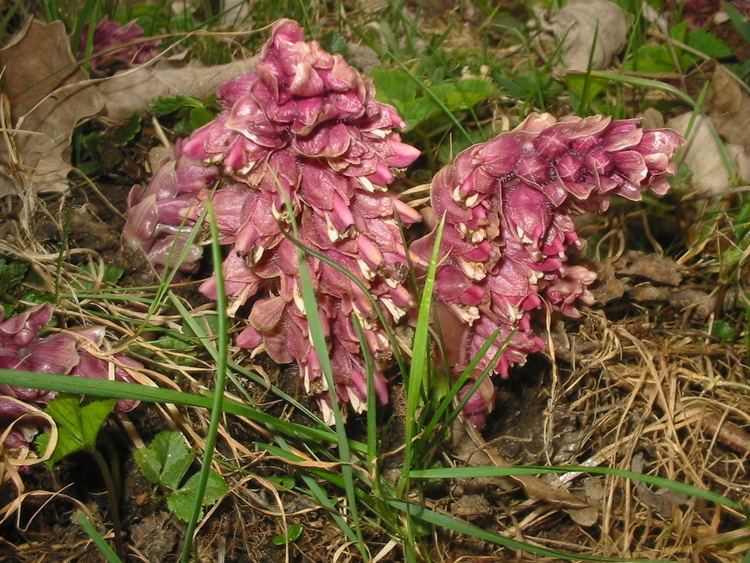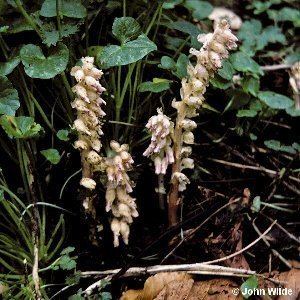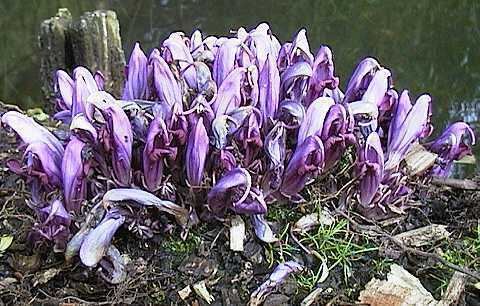Scientific name Lathraea Rank Genus | Tribe Rhinantheae | |
 | ||
Lower classifications Lathraea squamaria, Lathraea clandestina | ||
Bombus lathraea clandestina
Lathraea (toothwort) is a small genus of five to seven species of flowering plants, native to temperate Europe and Asia. They are parasitic plants on the roots of other plants, and are completely lacking chlorophyll. They are classified in the family Orobanchaceae.
Contents

The toothwort is a protocarnivorous plant.‹See TfD› Most of the plant consists of a branched whitish underground stem closely covered with thick fleshy colourless leaves, which are bent over so as to hide the under surface; irregular cavities communicating with the exterior are formed in the thickness of the leaf. On the inner walls of these chambers are stalked hairs, which when stimulated by the touch of an insect send out delicate filaments by means of which the insect is killed and digested.


In Pavel Ivanovich Melnikov's "In the Forests" a Russian wise woman (znakharka) calls this plant Peter's Cross and says it protects against devils but only if collected with a prayer to God.

Lathraea garden plants
Etymology
The genus name Lathraea derives from the ancient greek λαθραῖος (lathraîos), meaning "clandestine", which is a reference to the fact that it is inconspicuous until it flowers.
